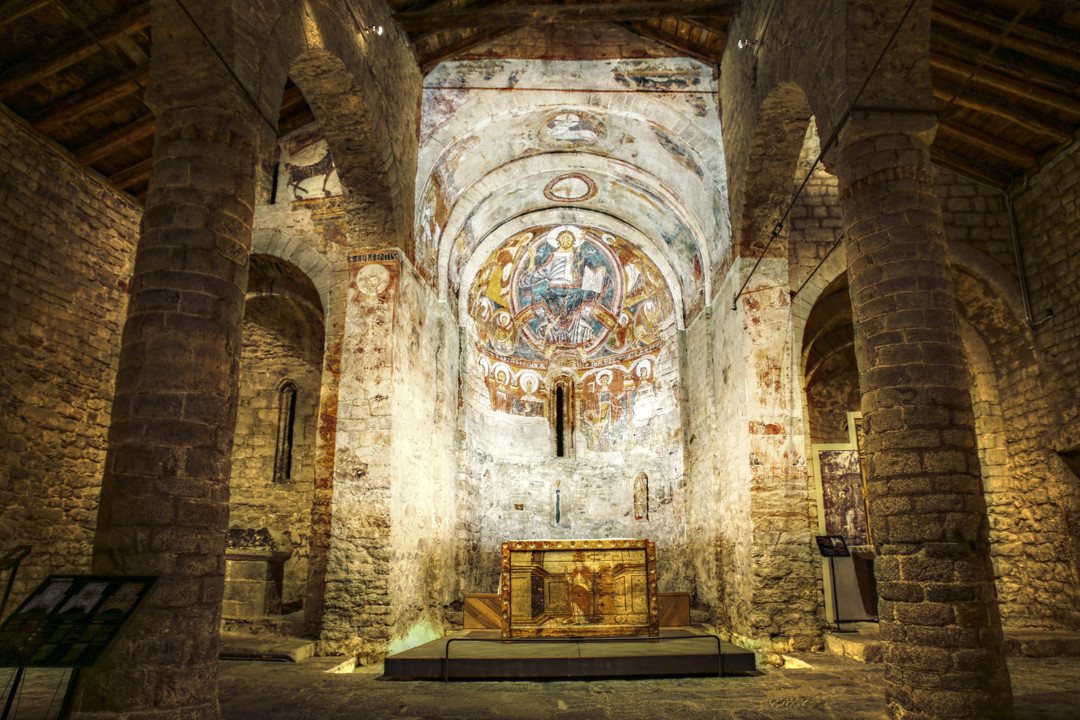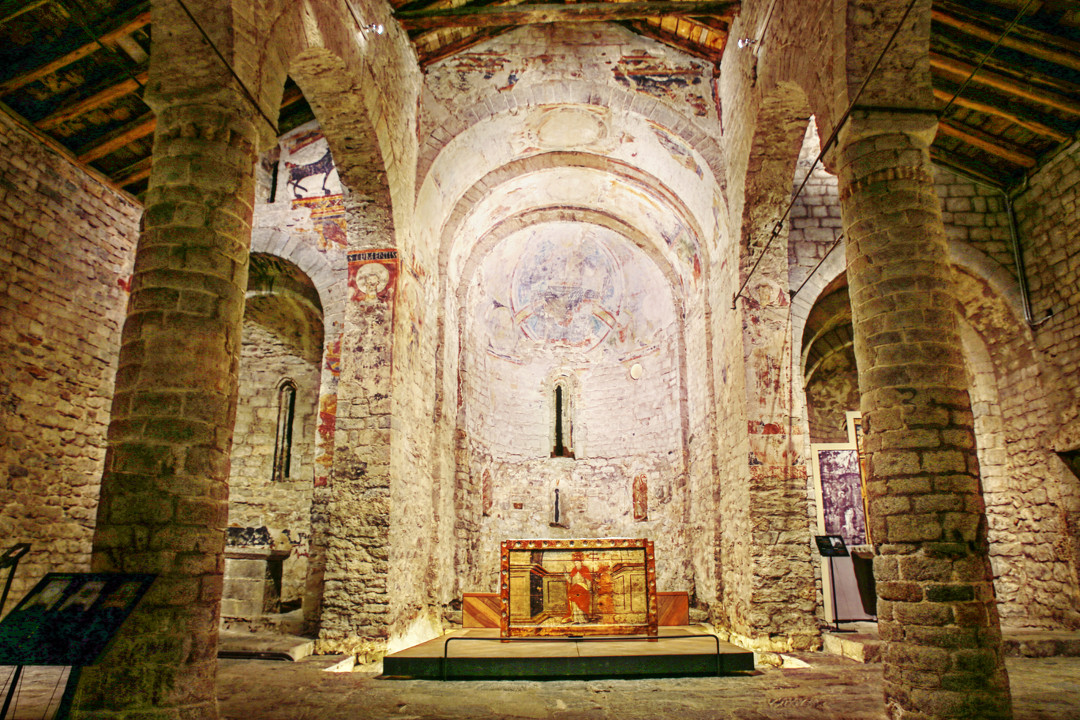Sant Climent de Taull
by surreal
on Sketchfab
Recently I have been part of the team that has worked in the visual reconstruction of the central apse of the Church at Sant Climent de Taüll, a 900 years old romanic church in the Catalan corner of the Pyrenees. The romanic churches of the Boi Valley were declared a World Heritage Site by UNESCO in 2000.
You can see the full video, a making off and detailed info here: http://pantocrator.cat
In the wikipedia you can see the famous Taüll’s apse, but this image is actually a 1950’s facsimil made by the catalonian artist Ramon Millet. The original (painted in 1123) was ripped from the walls in the 1920’s by the goverment to protect the piece from yankee millonaires who raid europa looking for ancient art in middle of a great depression, trying to make a big deal. (many of the ancient art of this and other countries where illegally sold in this ages) Millet constructed a fasle ceiling over the ripped walls and decorated it based in a watercolor made in 1908 by the painter Joan Vallhonrat.
I was in charge of the 3D modeling from a FARO laserscaner pointcloud. I also worked together with Eloi Maduell and Josep Giribet in the analisis and study of the topology
Here is a gigaphoto of the original paintings preserved in the National Art Museum of Catalonia made by Josep Giribet. There you can navigate deep into the paintings…
While a bunch of historians and archaeologists worked on the restoration of the wall, Eloi Maduell from Playmodes where in charge of the construction of a projection mapping installation. The target was to put again the original paintings over the ancient walls, throught the video mapping technique, showing an historical recreation of the 1123 piece.
That’s how I was in charge of the 3D modeling from a FARO laserscaner pointcloud adquisition conducted by Captae. I also worked together with Eloi and Josep in the analisis and study of the topology, to better find a way to unfold the whole arquitecture to facilitate the drawings and animation process made afterwards by the illustrator Albert Burzon. It was a pleasant and enriching experience.
I was able to work with a 30 Million vertex pointcloud, remesh it and create a precise UV unfold by using FLOSS tools in a linux environment.
The great Meshlab + Blender combo allowed me to drive all my intervention in this project with free software, through meshlab and blender. I was able to work with a 30 Million vertex pointcloud, remesh it and create a precise UV unfold by using FLOSS tools in a linux environment.
Both black and white and color textures where recovered from the laserscanner pointcloud allowing us to warp and remap the original fragments over the texture from the walls. The final textures are 4 images with 8k resolution.
Finally the virtual reconstruction was projected via 6 projectors in the original location and now it is an stable installation inside of the church.
Burzon*Comenge & Playmodes has just released http://pantocrator.cat, a web showing detailed info about the 3d mapping project on the central apse of the Church at Sant Climent de Taüll, a 900 years old romanic church in the Catalan corner of the Pyrenees. The romanic churches of the Boi Valley were declared a World Heritage Site by UNESCO in 2000.
I was in charge of the 3D modeling from a FARO laserscaner pointcloud. I also worked together with Eloi Maduell and Josep Giribet in the analisis and study of the topology, to better find a way to unfold the whole arquitecture to facilitate the drawings and animation process made afterwards by the illustrator Albert Burzon.
I was able to work with a 30 Million vertex pointcloud, remesh it and create a precise UV unfold by using FLOSS tools in a linux environment. For this work i used Blender + Meshlab.
You can see the full video, a making off and detailed info here: http://pantocrator.cat
—-
Want to specially thanks to the meshlab team for the tools they made. I was able to learn about how to work with pointclouds mainly by carefully reading the documentation in their blog, wich is a great source of topologic wisdom :P
Here is a recomended reading for everyone, found inside the meshlab blog. An interesting reflexion about FLOSS development and The Academy.


